Title : Value of pulmonary rehabilitation in interstitial lung disease
Abstract:
Background: ILDs are restrictive pulmonary disorders that make lungs unable to expand on inhalation. Persistent symptoms and/or limitation in usual efforties make PR very helpful.
Aim of work: Was to evaluate the role of PR in improvement of dyspnea, quality of life and functional capacity in patients with ILDs.
Patients and methods: 20 adult patients with ILDs were selected from the ward of the Chest Diseases Department at Al-Maamora chest hospital. They were subjected to PR program (three sessions per week for 6 weeks). The program consisted of Endurance, strengthing and breathing exercise. Spirometery, arterial blood gas analysis(ABG), 6-minute walking distance (6MWD), Aerobic capacity (VO2 peak) using Rockport formula , Peripheral muscle strength assessment ,Dyspnea assessment (mMRC) and health-related quality of life (HRQL) score using (SGRQ) were evaluated at baseline and at the end of the sixth week of the program.
Results: There was significant improvement in mMRC (p=0.001), 6MWT (p=<0.001), PIMAX(p= 0.003), PEMAX(P=0.003),VO2 Peak (P=0.005), HRQL(P=<0.001). However, ABG and spirometery showed no significant improvement at the end of the program.
Conclusions: PR improves exercise capacity, dyspnea score, peripheral muscle strength and HRQL in patients with ILD.



